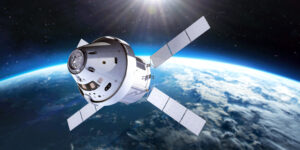HEARING CONSERVATIONIST WARNS OF OVERPROTECTION
When More Is Not Better: No hard and fast rule, but you’ll know it when you can’t communicate.
Posted: June 27, 2008
Hearing protectors are unique among personal protective equipment in that, in order to protect hearing, they make users partially deaf. This can lead to complications not found with other protective equipment, namely, overprotection, said hearing conservationist Renee S. Bessette, COHC.
"The risks of overprotection are very real when dealing with hearing conservation, and the consequences can be catastrophic," says Bessette, who is marketing manager for Sperian Hearing Protection, LLC, corporate parent of the Howard Leight® brand. "A worker who cannot hear the warning signal of a truck or piece of heavy equipment backing up can be in serious danger."
But the consequences are more common and more far reaching than that, she adds. "Workers who cannot hear on the job are much more likely to make mistakes than those who can communicate naturally with their supervisors and co-workers. Also, studies have shown that workers who cannot communicate clearly or effectively with their fellows tend to feel more isolated on the job, and are less likely to be happy or productive."
What is overprotection? There is no hard and fast rule, but according to Bessette, any protection that reduces sound levels so far below the OSHA-defined 85 dB Action Level that it interferes with communication can be considered overprotection. "For example," she explains, "properly using an earplug rated at 33 NRR to protect against 90 dB noise levels (the minimum for which protection is required) would definitely qualify."
To guard against overprotection, Bessette recommends a three part strategy. "First, know the noise levels in your facility, especially in areas where other hazards are present. A good idea is to post a noise map, indicating where hearing protection is required, and how much. Making workers wear hearing protectors in areas where they are not required, or providing hearing protectors overrated for the noise hazard is a sure way to induce overprotection."
Second, Bessette says, select HPDs that provide the right levels of protection. The Environmental Protection Agency is expected to announce a change to the Noise Reduction Rating (NRR) soon that will change the NRR from a fixed number to a range of protection for hearing protectors. "Most manufacturers provide charts showing protection levels for their products," notes Bessette. "Select a product that will lower your worker's exposure to a safe level, but not one that reduces ambient levels too far below 85 dB."
Also, Bessette points out that there are a number of new products on the market which provide level or uniform attenuation. "These products, such as earplugs and earmuffs, are designed to block harmful noise but to allow warning signals and speech communication to be heard more naturally," she says. The third element in Bessette's overprotection strategy is to make sure workers understand the risks. "It's hard enough to get workers to understand the risks of hazardous noise in the first place, but we also need to make them understand that more protection is not always better."
Recent studies have shown the best way to facilitate this understanding is through one-on-one training. "Group training is a good reminder of hearing conservation principles," says Bessette, "but individual sessions ? especially those using some of the new fit-testing software products ? are far more effective, both in helping workers achieve good results from their hearing protectors, and in avoiding overprotection."
– – – – – – – – – – – – – – – – – – – – – – – – – – – – – – – – – – – – – – – – –
Sperian Hearing Protection, LLC, 7828 Waterville Road, San Diego, CA 92154, 800-430-5490, Fax: 401-232-3110, rbessette@SperianProtection.com, www.howardleight.com.










